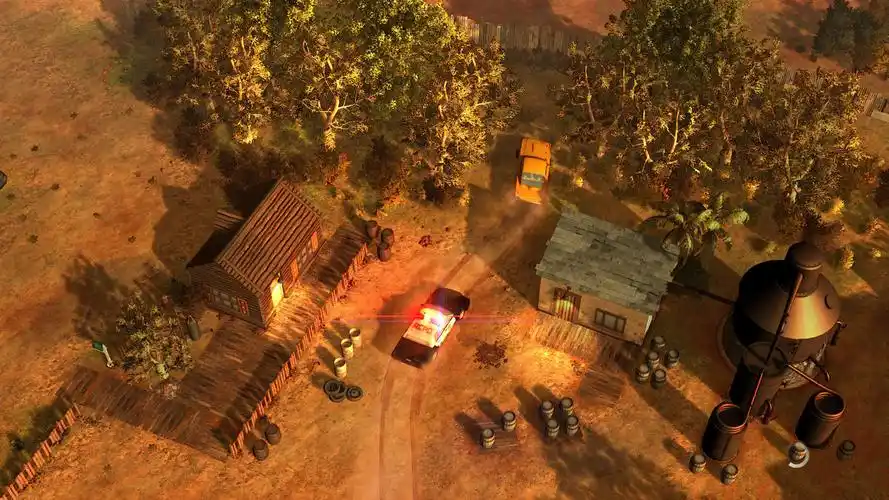Title: The Unseen Frontline: Inside "Virus Outbreak Shelter Sign Installer Simulator VR - Place Missions DLC"
Tags: #VRGaming #Simulation #DLCReview #VirusOutbreak #IndieGame #GamingCommunity #ImmersiveSim #MetaCommentary
The virtual reality landscape is often dominated by fantastical shooters, serene exploration titles, or rhythm games that get our hearts pumping. It’s a rare occurrence when a developer dares to ask a simple, profound question: what about the quiet, bureaucratic, yet utterly essential heroes of a crisis? This is the niche that "Virus Outbreak Shelter Sign Installer Simulator VR" carved out with bizarre brilliance, and its new "Place Missions" DLC doesn't just expand the game; it completes its haunting, poignant vision.
For the uninitiated, the base game cast you as a contractor for the ominously named Department of Public Containment (DPC). As a deadly, nebulous virus sweeps the globe, your job isn't to find a cure or fight infected hordes. Your duty is to install bright, yellow, highly specific signage on designated shelters. The core gameplay loop was a masterclass in mundane tension: checking your work order tablet, selecting the correct sign from your van’s inventory ("Class 4 Bio-Hazard Shelter," "Air Filtration On," "Occupancy Max: 50"), using your power drill to affix it to the correct door, and moving on, all while the world crumbles around you via news reports on the van’s radio. The horror was not in jump scares, but in the eerie silence of abandoned streets and the chilling contrast between your pedantic task and the apocalyptic context.
The "Place Missions" DLC elevates this concept from a clever satire into a deeply immersive and emotionally complex experience. It understands that a sign on a door is the end of a journey. This DLC is about the beginning.
The new missions task you not with installation, but with reconnaissance and placement planning. Equipped with a new, government-issued "Zone Surveyor" tablet and a bag of temporary marker flags, you are now the first DPC operative on the scene in newly designated quarantine sectors. Your van is parked at the edge of a "hot zone." The radio crackles with static-laced指令 from a dispatcher whose voice is strained with exhaustion. Your mission: navigate a multi-block area and identify the most structurally sound, accessible, and logically appropriate buildings to be converted into shelters, then mark them for the installers who will follow.
This shifts the gameplay dramatically. The satisfying brrrrr of the power drill is gone, replaced by the hushed sounds of your own breathing inside the VR headset and the crunch of debris under your virtual feet. The DLC introduces new mechanics centered on assessment. You must use your tablet to scan building facades, checking for structural integrity percentages that pop up on your HUD. A cracked foundation or a collapsed roof renders a building unsuitable. You need to check for wide, double doors for efficient ingress and egress, and accessible ground-floor windows for ventilation unit installation.
This is where the DLC’s genius truly lies. It transforms the player from a passive order-follower into an active decision-maker, burdened with moral and logistical weight. Is the large, sturdy community center a better choice than the smaller but more numerous apartment block? Do you place a flag on the local church, knowing it has a strong basement but might be a psychological target for desperate people? The game provides no "correct" answer, only a list of requirements to minimally meet. The choice, and the guilt that might come with it, is yours alone.
The new environments are a character in themselves. The base game featured largely empty streets. The "Place Missions" DLC showcases the aftermath. You’ll navigate through neighborhoods frozen in time: cars left running with doors ajar, shopping carts spilled over in supermarket parking lots, and children’s toys scattered on overgrown lawns. The silence is deafening, broken only by the distant, ambiguous sounds of sirens or sometimes, disturbingly, a single dog barking from inside a locked house. This isn’t a world of zombies; it’s a world of abrupt absence, and your solitary presence as a bureaucrat with a bag of flags makes it feel all the more lonely and profound.
A subtle but powerful new feature is the "Population Density" overlay on your tablet. Turning it on shows a heat map of the area based on pre-outbreak data. A building might be structurally perfect, but it glows a hot red on your map, indicating it was a densely populated residential area. Placing a shelter flag there is logically sound, but it feels grim, a cold statistical decision about who might have already been lost. It’s a brutal piece of narrative storytelling conveyed through a simple UI element.

"Place Missions" is not "fun" in the traditional sense. It is tense, contemplative, and emotionally draining. It is a simulator not of action, but of consequence. The DLC argues that the architecture of survival is built long before the first survivor arrives, designed by unseen individuals making impossible choices with limited information. You don’t get a weapon; you get a clipboard. You don’t get a victory screen; you get a dispatch message confirming your flags have been received and that your work is "adequate."
By the end of a multi-hour session, you will have forgotten about the inherent absurdity of the game’s premise. You will only feel the weight of the flags you placed and the ghosts of the communities you’ve just systematically categorized for potential salvation or abandonment. "Virus Outbreak Shelter Sign Installer Simulator VR: Place Missions DLC" is a triumph of video game minimalism. It proves that true immersion isn’t about how many enemies you can defeat, but about how deeply a game can make you care about the silence between the decisions, and the profound responsibility of simply placing a flag.












